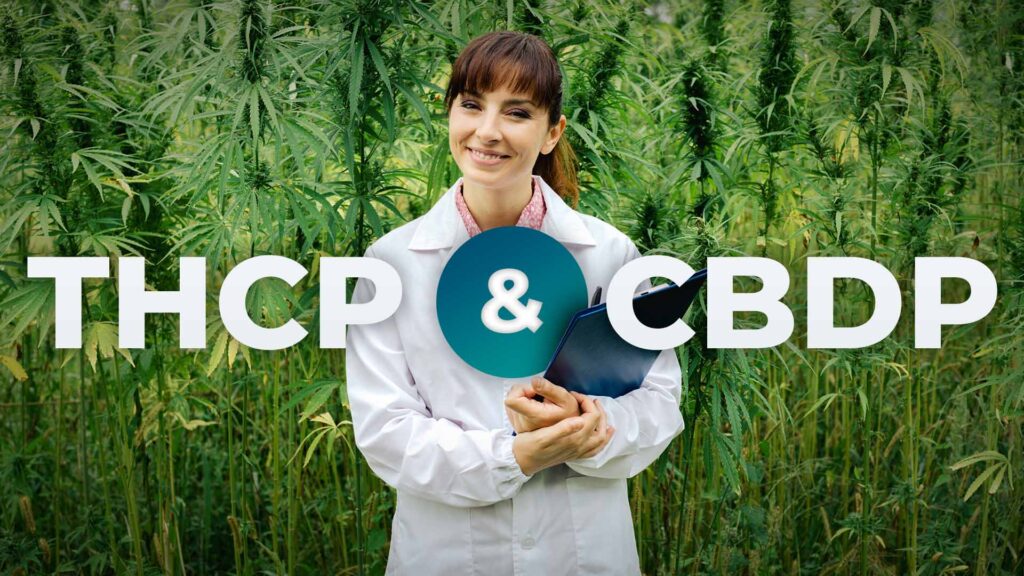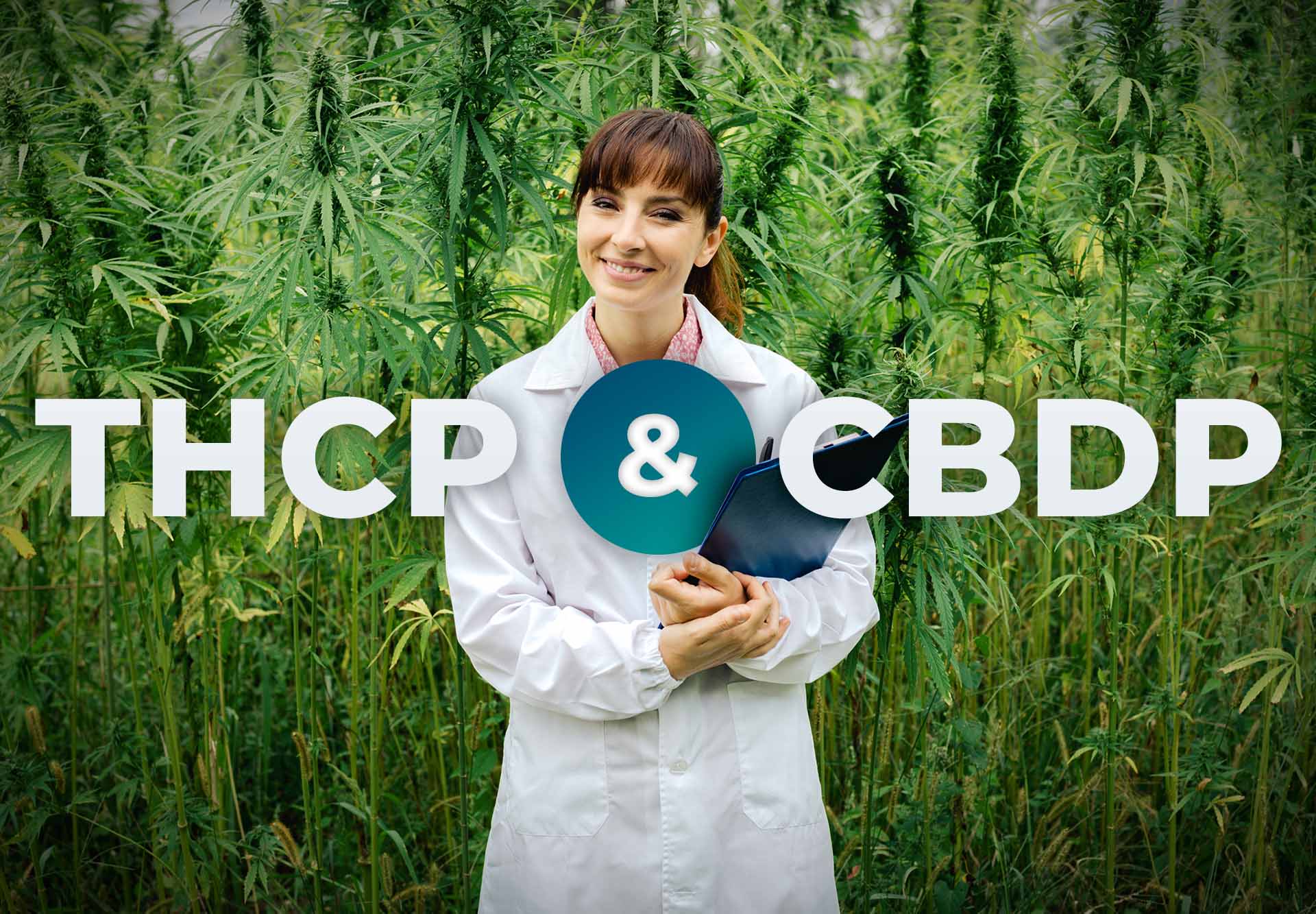A team of Italian researchers who were doing a study on industrial hemp, stumbled upon two new cannabinoids; THCP and CBDP. They published their study in Scientific Reports on December 30, 2019. In this article I will explain the ramifications of this exciting yet unexpected discovery and discuss the analytical tools used in their study.

Professor Giuseppe Cannazza of the University of Modena and Reggio Emilia conducted the study. His team included Cinzia Citti and Pasquale Linciano. The original focus of their project was to investigate an industrial hemp strain known as FM2. In doing so, they identified two new cannabioids, which they named THCP and CBDP. The team had also discovered two other cannabinoids, THCB and CBDB, the previous year.
This research is part of UNIHEMP (Use of Industrial Hemp Biomass For Energy and New Biochemical Production), funded by the Italian Ministry of Education, University and Research and the European Regional Development Fund.
Why This Is Such A Big Deal
THCP was shown to contain a 7 link side chain which has never been seen before in a natural occurring cannabinoid. THC contains a 5 link side chain. These extra two links allows THCP to bind more effectively to CB1 and CB2 receptors.
- THCP was 33 times more active than THC
- THCP was 63 times more active than THCV
- THCP was 13 times more active than the newly discovered cannabinoid THCB against CB1 receptor
- THCP is more lipophilic (making it easier to dissolve in or combine with fats)
According to Dr. Cannazza, his research team stumbled upon the discovery of THCP precisely “because no one was looking for them.” The research uncovered the presence of the phytocannabinoids, THCP and CBDP, in the strain supplied by the Italian government. That has left the team in the dark about whether or not and to what extent other chemovars can produce these two cannabinoids.
The discovery of THCP may explain why some strains that have low levels of THC are more potent, both in their psychotropic effects as well as in their therapeutic benefits.
Metabolomics and Mass Spectrometry
Dr. Cannazza’s team employed the use of metabolomics to analyze the FM2 strain. Metabolomics measures metabolites by combining mass spectrometry and chromatography for separation. The result is a pattern represented by a digital readout of an individual’s current health status that can be used as a diagnostic tool.
Metabolomics can be used to provide a direct measurement of the body’s response to cannabis treatment and use. Assessing individual metabolites can identify how the body changes before and after cannabis use in relation to its potential alterations to neurotransmitters or natural endocannabinoids.
Mass spectrometry is an analytical technique which explains the structural and chemical properties of specific molecules. It identifies unknown compounds and measures known compounds within a given sample.
The role that mass spectrometry plays regarding safety in cannabis testing includes the following:
- Pesticide residue analysis
- Heavy metal level
- Mycotoxins from bacteria
- It is also used to test the potency of cannabinoids and assess terpene profiles in a particular strain.
Cannabimimetic Properties
The results of the study indicate that the percentages of THCP were lower than those of THC within the plant, both in vitro and in vivo. The two new compounds also appear to have cannabimimetic properties; they engage with CB1 receptor activation which far exceeds the activation of CB1 and CB2 receptors of THC in its decarboxylated form. As a result of the stronger engagement by THCP of the CB1 receptors in the brain, the consumer may end up with excessively potent and intoxicating effects.
The Italian team used mouse models which demonstrated that the binding potential of THCP on CB1 receptors caused similar behavioral and phsyiological effects to THC at about half the dose. These included hypomotility (deficiency of movement), a reduction in rectal temperature, an analgesic effect and catalepsy (a trancelike state where limbs remain in the position in which they are placed.) The strong binding helps to explain why certain chemovars with THCP are more effective at providing strong therapeutic relief than those with THC alone.
Another member of the team, Dr. Citti, is certain that both THCP and CBDP have important medical applications, but that further investigation is needed to understand not only the benefits but the risks in using these cannabinoids. He foresees the development of THCP-rich cannabis varieties in the future once the pharmacological profile of THCP is determined.
Just a side note that the Italian team also identified CBDP. Cannabis researchers have established that CBD does not bind particularly well to CB1 and CB2 receptors. Like the chemical structures of THCP and THC, CBDP has a seven link side chain while CBD has a five link side chain. Dr. Cannazza and his team do not believe that the two additional links in CBDP would impact its effectiveness in binding to cannabis receptors. Although they suspect that CBDP is more potent than CBD, they are focusing most of their attention on THCP.
The properties and potential uses of THCP and CBDP are not known, but researchers agree that they should be included in the list of major cannabinoids that deserve much more investigation. This opens the door to the possibility of creating strains that have strong pharmacological effects which require much lower dosages.
Sources:
hightimes.com, What We Know So Far About The Newly Discovered Cannabinoids THCP and CBDP, Dario Sabaghi, Feb. 3, 2020
cannabissciencetech.com, Metabolomics: The Next Step in Personalized Cannabis Medicine, Megan L’Heureux, Dec. 2, 2019
cannabisdispensarymag.com, New Discovered Natural Cannabinoid THCP Offers Greater Potency Than THC, Andrea Sparr-Jaswa, Jan. 10, 2020
iflscience.com, Scientists Isolate and Describe Two New Cannabinoids Found in Marijuana, Mdison Dapcevich, Jan. 7, 2020

